Incorporating Natural Elements into Cabin Interior Design
In cabin interior design, incorporating natural elements can greatly improve comfort and aesthetics, creating a living space that harmonizes with nature. By effectively using natural materials, colors, light, and plants, the interior can reflect the beauty of the outdoors, offering residents a relaxing retreat. This article explores how to seamlessly integrate these natural elements into cabin designs.
Use of Natural Materials
Wood

Wood is the primary natural material in cabin design. Its rich textures and colors bring warmth and a rustic feel to the space. For example, untreated pine or cedar walls can create a cozy atmosphere and even release a subtle wood scent that adds to the natural experience. Additionally, wood is an excellent insulator, helping to keep the cabin warm in winter and cool in summer. Furniture made from solid wood, like tables and chairs, also enhances this warm vibe. Choosing pieces with unique grain patterns adds character, making the cabin feel inviting and homey.
Stone and Ceramic
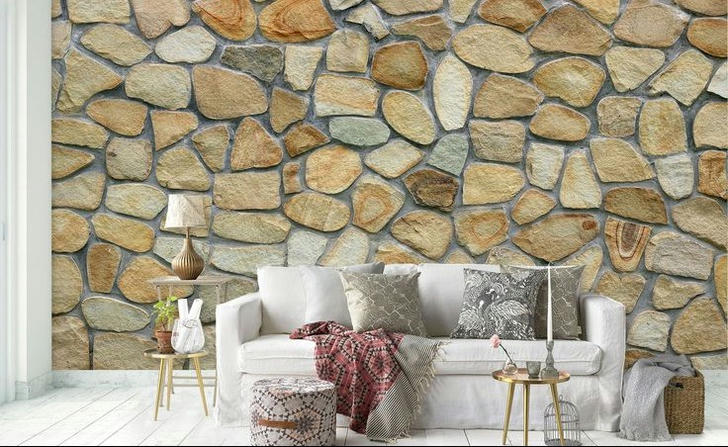
Alongside wood, stone and ceramics are popular choices. The ruggedness of stone contrasts nicely with the softness of wood, creating a striking visual appeal. In kitchens and bathrooms, stone countertops and ceramic tiles not only look great but are also easy to clean. For instance, granite or marble countertops offer durability and a touch of elegance, while natural stone in the bathroom can create a spa-like feel. Handmade ceramic items, such as pots or decorative plates, can serve as eye-catching accents that further connect the space to nature.
Color Usage
Natural Hues
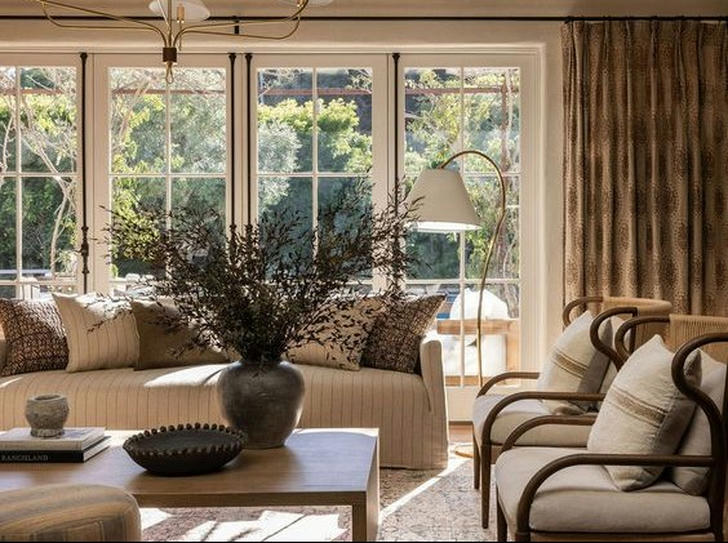
The color palette in a cabin should reflect natural tones like beige, brown, green, and blue. These colors can create a peaceful, relaxing environment that fosters a connection to the outdoors. For example, soft beige or warm wood tones on the walls can set a comfortable tone, while deep brown or green fabrics can enhance the natural feel. This color combination can make rooms appear more spacious and bright, contributing to a warm and welcoming atmosphere suitable for gatherings.
Accent Colors
While natural hues form the base, adding accent colors can inject energy into the space. Brightly colored cushions, throws, or artwork can make the environment feel lively. For example, placing vibrant cushions on a sofa can draw the eye and create depth in the room. Additionally, artwork reflecting rural themes or modern abstract pieces can serve as focal points, showcasing the resident’s personality while enhancing the overall aesthetic.
Natural Light Integration
Large Windows
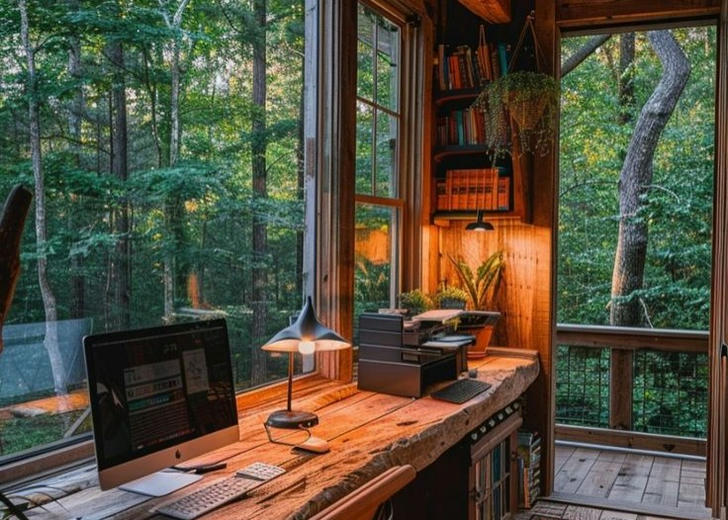
Natural light is essential in cabin design. Installing large windows can bring in sunlight, making the space feel bright and open. Floor-to-ceiling windows or wide horizontal windows allow residents to enjoy stunning outdoor views and create a sense of openness. Careful consideration of window orientation is vital for maximizing sunlight exposure. For example, south-facing windows can warm the cabin in winter, while north-facing windows can promote ventilation and fresh air. Adding a window box garden can further enhance this space by incorporating greenery.
Skylights
Skylights are another excellent way to bring in natural light. They let sunlight stream directly into the cabin, brightening up darker areas and improving ventilation. In lofts or less illuminated rooms, skylights can significantly enhance comfort. Custom skylights can be tailored to the specific needs of the space, allowing for fixed or operable designs that can boost airflow when needed. Positioning and angling skylights correctly can maximize sunlight, creating a bright and welcoming atmosphere.
Incorporating Plants
Indoor Plants
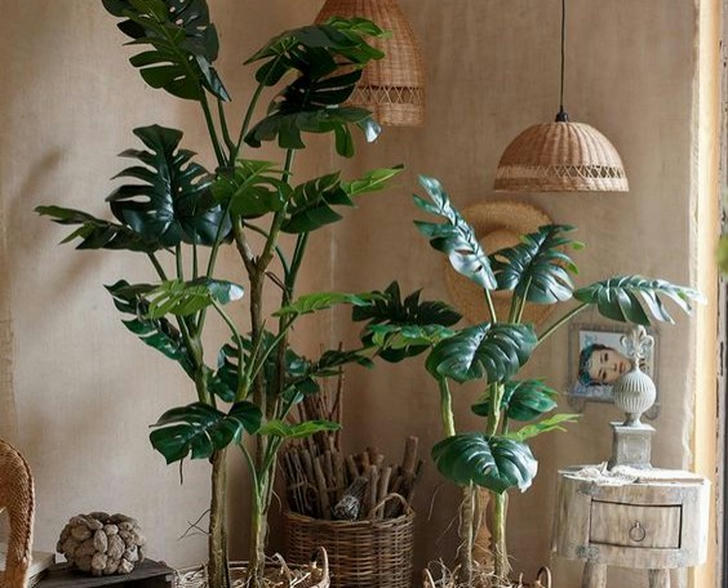
Adding greenery to a cabin can beautify the environment and improve air quality. Choosing indoor plants like ferns, ivy, or air plants can introduce life and color. Placing plants on windowsills, shelves, or in corners can create a vibrant atmosphere. Plants like spider plants or aloe vera not only enhance aesthetics but also help purify the air, ensuring a healthier living environment.
Vertical Gardening
For smaller spaces, vertical gardens can be an innovative solution. By growing plants on walls, you can maximize space while enriching the natural feel. This design is visually appealing and allows residents to enjoy the benefits of nature in their home. For instance, using a wall-mounted planter with various plants can create a lush green wall that becomes a unique centerpiece, saving floor space and attracting visitors' attention.
Furniture and Decor Selection
Natural Material Furniture
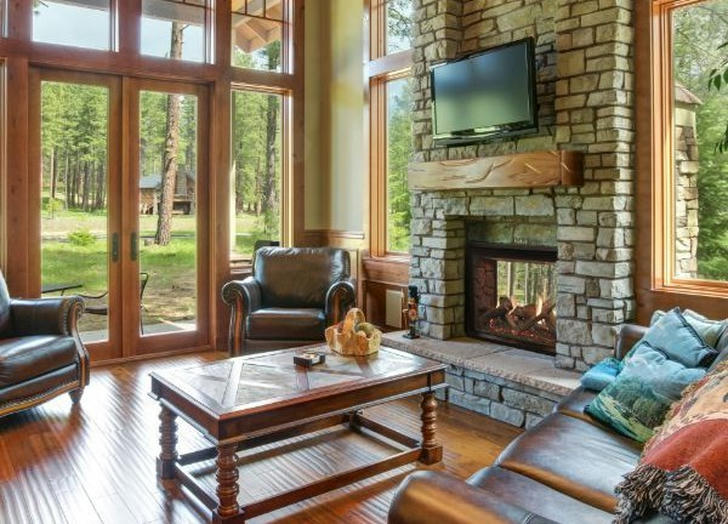
When selecting furniture, prioritize items made from natural materials. Options like solid wood tables and bamboo storage solutions can infuse the cabin with a natural vibe. These pieces are not only durable but often feature distinctive textures that enhance the cabin's cozy feel. Custom furniture can also be tailored to fit the space and style preferences of residents, ensuring every piece complements the overall design. Arranging furniture for easy movement helps avoid overcrowding and keeps the space functional.
Handmade Decor
Using local handmade decor can further enrich the cabin's natural atmosphere. Handmade items often use natural materials and can carry cultural significance. Choosing handwoven blankets, ceramic dishes, or carved wooden sculptures adds personality and warmth to the space. For example, displaying local artists' work can showcase regional culture while adding an artistic touch, making the cabin feel like a unique retreat.
Incorporating natural elements into cabin interior design fosters a space that feels connected to the outdoors. By utilizing natural materials, colors, light, and plants, you can create a home that enhances the quality of life. The blend of wooden textures, warm hues, bright sunlight, and lush greenery together forms an inviting environment, helping residents find tranquility and comfort amid a busy world. This approach makes cabins an ideal choice for those seeking a natural, comfortable lifestyle.
